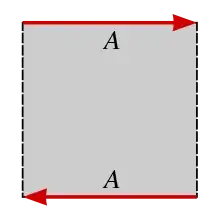I feel like this should be simple, and it is intuitively obvious by looking at the polygon with side identifictations version of the Mobius band, but how do we explicitly show, i.e find the homeomorphism, that the boundary of the Mobius band is the unit circle $S^1$?
Thanks
